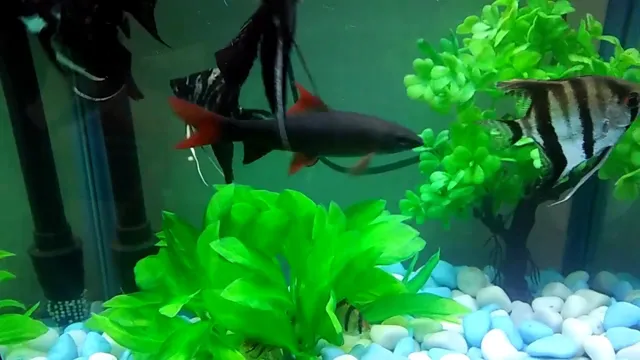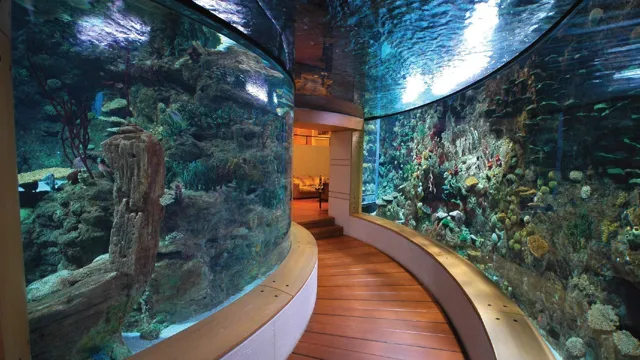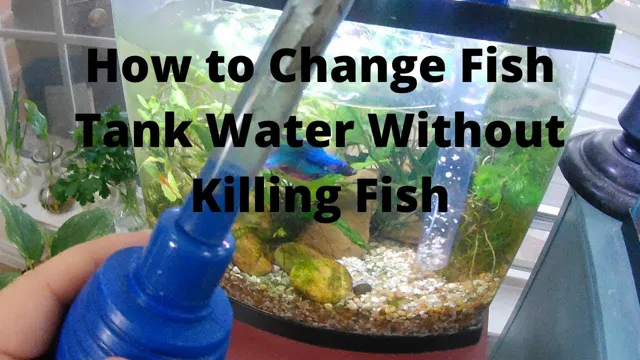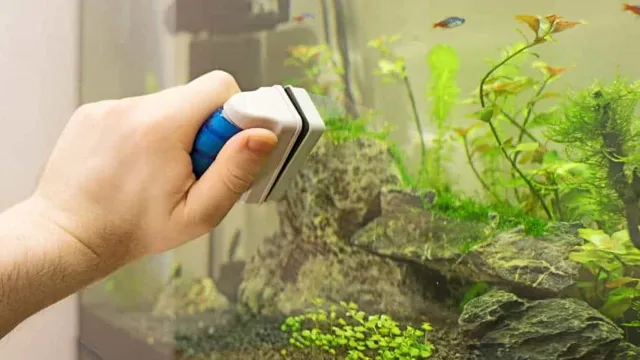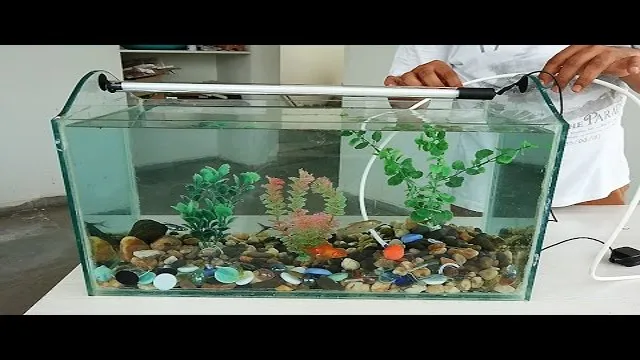Is there a mysterious brown substance taking over your aquarium? If so, you may be dealing with an excess of nitrites in your tank. Nitrites are harmful to fish and can cause health problems, even death, if not dealt with promptly. Fortunately, there are several ways to remove nitrites from your aquarium and maintain a healthy environment for your aquatic pets.
In this article, we’ll explore the causes of nitrite buildup in your tank, the symptoms of nitrite poisoning in fish, and most importantly, how to remove nitrites from your aquarium to keep your fish swimming happily.
Understanding Nitrites in Your Aquarium
If you’re experiencing high levels of nitrites in your aquarium, it can be concerning for the health of your fish. Nitrites are a byproduct of the nitrogen cycle, which is essential in maintaining a healthy aquarium. However, when nitrite levels become too high, they can be toxic to fish and other aquatic creatures.
To get rid of nitrites in your aquarium, there are several steps you can take. First, perform a partial water change to dilute the nitrites in the water. You can also add aquarium salt to help reduce nitrite levels.
Additionally, ensure that your aquarium is properly cycled and that all equipment, such as filters and pumps, are functioning properly. These steps will help to maintain a healthy aquarium and reduce the risk of high nitrite levels.
What are Nitrites and Why are They Harmful to Your Fish?
Nitrites are common in aquariums and they can be harmful to your fish if they are not properly managed. Nitrites are nitrogen compounds that are produced when fish waste and uneaten food break down in the tank. They are toxic to fish, causing stress and illness that can weaken their immune system and lead to death.
For this reason, it is important to regularly test for nitrites in your aquarium and maintain a healthy balance of beneficial bacteria to keep nitrite levels low. One effective way to reduce nitrites is to add plants to your aquarium as they help to absorb excess nutrients and keep the water clean. Keeping a close eye on your fish and monitoring the nitrite levels in your tank can help to prevent harmful spikes and keep your fish healthy.
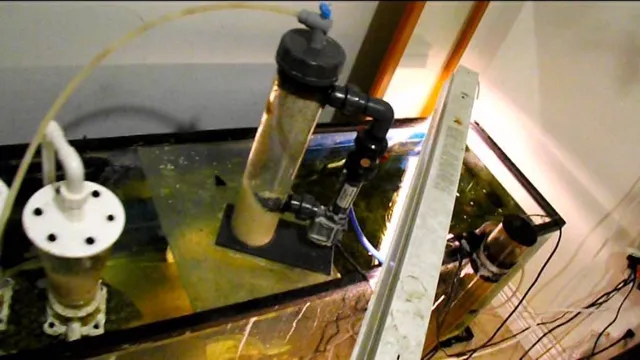
What Causes Nitrite Build-Up in Your Aquarium?
Nitrite build-up in your aquarium can be a common problem for many fish keepers, but what exactly causes it? Nitrites are created in your aquarium through the breakdown of waste produced by your fish. This waste contains ammonia, which is then converted by bacteria into nitrites. Although nitrites are less harmful than ammonia, too much of it can still be dangerous for your fish.
This is because it can cause nitrite poisoning, which can lead to fish stress, illness, and even death. To prevent nitrite build-up in your tank, it’s important to ensure that your aquarium has the right balance of beneficial bacteria and that you regularly test your water to maintain healthy levels. By understanding the cause of nitrite build-up, you can take the necessary steps to keep your fish and aquarium healthy and thriving.
Testing for Nitrites in Your Aquarium
If you’re an aquarium owner, you know how important it is to maintain the health of your fish and ecosystem. One issue that can arise is high levels of nitrites in your aquarium, which can be harmful to your fish if left untreated. Luckily, there are ways to test for nitrites in your aquarium, and once detected, you can take steps to reduce them.
One solution is to perform regular water changes and thoroughly clean the substrate and decorations in your tank. Another option is to add nitrifying bacteria to help break down the excess nitrites. By staying on top of the nitrite levels in your aquarium, you can ensure a healthy and safe environment for your finned friends.
So, if you’re wondering how to get rid of nitrites in your aquarium, start by testing for them and taking steps to reduce them. (See Also: How to Make Fake Plants for Aquariums: Easy DIY Tips and Tricks)
Why it’s Important to Test for Nitrites
Testing for nitrites in your aquarium is crucial for the health and well-being of your aquatic pets. Nitrites are a harmful byproduct of the nitrogen cycle that occurs in the aquarium water. If left unchecked, the accumulation of nitrites can lead to serious health complications for fish and other aquatic organisms.
Testing for nitrites is a simple and straightforward process that can be done with test kits available at most pet stores. By monitoring the nitrite levels in your aquarium, you can detect any potential problems early on and take steps to address them before they become serious. So, don’t neglect testing for nitrites – it’s an essential step in ensuring the longevity and vitality of your aquarium inhabitants.
How to Test for Nitrites in Your Aquarium
Testing for nitrites in your aquarium is crucial for maintaining a healthy environment for your fish. Nitrites are toxic to fish and can cause a lot of harm if not detected early. To test for nitrites, you can use a water test kit specifically designed for aquarium use.
Test kits typically come with instructions that need to be followed to ensure accurate results. You will need to take a small sample of water from your aquarium and perform the test according to the instructions. Nitrite levels should be at zero in a healthy aquarium, so if your test shows a positive result, it means you need to take action to reduce the nitrites in your tank.
Regular testing is recommended to ensure that your fish remain healthy and happy. So, don’t forget to test for nitrites in your aquarium regularly to ensure that your fish are getting the best possible care.
Ways to Reduce Nitrites in Your Aquarium
One of the biggest challenges for aquarium owners is dealing with high levels of nitrites. These harmful chemicals are produced as a result of fish waste and leftover food, and if left unchecked, can lead to serious health problems for your aquatic pets. So, how can you get rid of nitrites in your aquarium? One effective way is by performing regular water changes.
This removes excess waste and helps to dilute the nitrites in the water. Another option is to use a biological filter that contains beneficial bacteria, which break down nitrites into less harmful nitrates. It’s also important to avoid overfeeding your fish and to regularly clean your aquarium to prevent the buildup of waste.
By taking these steps, you can keep nitrite levels in check and ensure a healthier environment for your aquarium inhabitants.
Perform Water Changes Regularly
Performing regular water changes is crucial in maintaining a healthy aquarium environment and reducing nitrites. Nitrites can accumulate in the water due to fish waste and excess food, and high levels can be harmful to your fish. By replacing a portion of the aquarium water on a regular basis, you can effectively dilute the nitrite levels and provide a fresh environment for your fish to live in.
It’s recommended to change 10-20% of the water every week or every two weeks, depending on the size of your aquarium and the number of fish. Not only does this help reduce nitrite levels, but it also removes other harmful substances and promotes the growth of beneficial bacteria. So, if you want to keep your aquarium healthy and your fish happy, make sure to perform regular water changes as part of your maintenance routine. (See Also: How to Make Plastic Aquarium: A Step-by-Step Guide)
Use Chemical Filtration
Chemical Filtration Nitrites can be hazardous to the health of your aquatic pets. However, there are several ways to reduce nitrites in your aquarium, one of which is by using chemical filtration. This type of filtration involves using materials that can remove nitrite or any other harmful substance from the water.
One such material is activated carbon, which has pores that can attract and trap the nitrite molecules. It’s essential to replace the activated carbon regularly to ensure it continues to work correctly. Another effective chemical filtration method is using zeolite, which converts nitrate into harmless nitrogen gas.
Like activated carbon, zeolite needs to be replaced regularly to keep your aquarium water healthy for your pets. If your aquarium water has high nitrite levels, consider using chemical filtration alongside other techniques to reduce them effectively.
Increase Surface Agitation
If you’re dealing with high levels of nitrites in your aquarium, one way to reduce it is by increasing surface agitation. Nitrites are harmful to fish and can cause a lot of stress, making it essential to find ways to keep them at a safe level. When you add oxygen to the water, it breaks down the nitrites into less harmful nitrates, reducing overall toxicity.
You can do this by adding a bubbler or increasing the water’s surface area, creating more air-water interaction. This creates a ripple effect, resulting in more oxygen being dissolved into the water, which helps lower nitrite levels. Additionally, you can also adjust your filtration system to promote better circulation, which helps distribute oxygen-rich water throughout the tank, further reducing nitrites.
By increasing surface agitation, you’ll not only help your fish thrive, but you’ll also create a beautiful, lively environment for them to swim in.
Conclusion
In conclusion, the key to getting rid of nitrites in your aquarium is not only through regular maintenance but also having a clear understanding of the nitrogen cycle. Keeping a watchful eye on your tank’s pH levels, ammonia, and nitrate levels can prevent nitrite spikes and ensure the health of your fish. Remember, a little effort goes a long way in keeping your underwater community happy and thriving.
So, don’t be a nitwit, maintain your tank’s nitrogen cycle and say goodbye to pesky nitrites!”
Monitoring Nitrites in Your Aquarium
Aquarium Nitrites If you’re a fish enthusiast, you know how important it is to monitor the nitrite levels in your aquarium. High levels of nitrite can be toxic to fish and can lead to health issues and even death. The good news is that there are several ways to reduce nitrites in your aquarium and keep your fish healthy.
One way is to perform frequent water changes, removing any excess waste and debris. Another method is to add live plants to your aquarium, which can help to absorb nitrates and other toxins. Additionally, you can use a biological filter to help break down the nitrites into less harmful substances.
Keeping a close eye on your aquarium’s nitrite levels and taking proactive steps to reduce them will ensure a healthy and thriving fish community. (See Also: Is the Aquarium Free on Your Birthday? Celebrate with Marine Life for Free!)
FAQs
What causes nitrites to build up in aquariums?
Nitrites are produced as a result of the breakdown of fish waste and uneaten food. They can accumulate quickly in the aquarium if there are not enough beneficial bacteria to break them down into nitrates.
How do nitrites affect fish in aquariums?
Nitrites are toxic to fish and can cause stress, illness, and even death. High levels of nitrites can also damage the fish’s gills and cause breathing problems.
How can you test for nitrites in your aquarium?
There are several test kits available that can measure the levels of nitrites in your aquarium water. These kits typically involve adding a few drops of a testing solution to a water sample and comparing the color of the water to a chart.
What is the best way to reduce nitrites in your aquarium?
The best way to reduce nitrites in your aquarium is to establish a healthy population of beneficial bacteria that can break down nitrites into nitrates. This can be achieved by adding a bacterial supplement or cycling your aquarium properly.
Can plants help reduce nitrites in aquariums?
Yes, plants can help reduce nitrites in aquariums by absorbing nitrates from the water. However, it is important to note that plants are not a substitute for proper filtration and maintenance.
What are some common mistakes that can lead to high nitrite levels in aquariums?
Overfeeding, overcrowding, and inadequate filtration are all common mistakes that can lead to high nitrite levels in aquariums. It is important to maintain a balance of fish, plants, and beneficial bacteria to ensure a healthy and stable aquarium environment.
Is it safe to add fish to an aquarium with high nitrite levels?
No, it is not safe to add fish to an aquarium with high nitrite levels. Nitrites are toxic to fish and can cause stress and illness. It is important to address the underlying issue and reduce the nitrite levels before introducing new fish.


